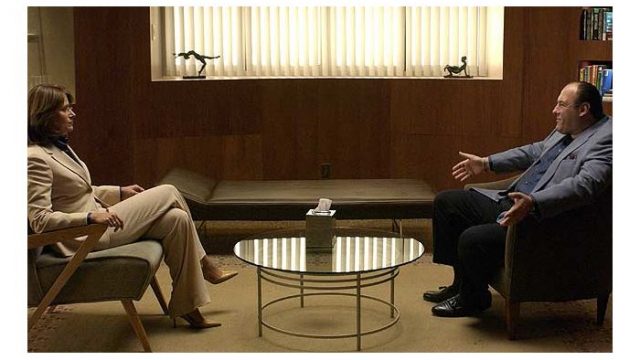This might be considered a follow-up to last week, I suppose. In fact, the reason it made it into my list of article ideas was the same conversation. A group of us were reading the pilot of Arrow, and we both observed that, yes, here was another superhero with a dead parent and that, no, regardless of all the character had gone through, no one just said, “Jeez, maybe you should see someone.” Nor had anyone said that to the teenager grieving the loss of her father and brother. This is because, in pop culture, there just basically aren’t therapists.
I’m sure you can list as well as I can characters who are in desperate need of mental health care. When the credits started rolling on Extremely Loud & Incredibly Close, I immediately turned to the person I’d gone to see it with and demanded of her why the kid hadn’t been in therapy before 9/11, and she concurred. There’s most of our pantheon of superheroes, of course. The kid from Room should be getting some sort of treatment, though I’ll admit to being uncertain what good it would do for the people in The Room, because their reactions are so far beyond conventional psychology. Even that nice Tom Hanks in Sleepless in Seattle would be better off seeing an actual therapist for a dozen or so sessions instead of calling the radio one.
Still, at least she’s a positive portrayal of a therapist, at least of sorts. I suppose the reason superheroes never go see therapists is that it’s clear that, at least in the DC universe, they don’t do any good. Look at the revolving door over at Arkham, after all, and do any of those people get better? (Aside from an absolutely charming episode of the animated series, of course!) Really, the best-known fictional mental health care professionals are probably Nurse Ratched, Dr. Hannibal Lecter, and Dr. Harleen Quinzel.
I think the real-life stigma against getting treatment and the fictional disdain for it feed off one another. Because you see people getting eaten by their psychiatrist, and you know, okay, we know that isn’t going to happen. Don’t be silly; of course that won’t happen! But . . . that doesn’t mean you can actually trust a therapist, does it? And you see a mental hospital where the patients are horrifically abused—and you know, it may to a certain extent be based on the real abuses suffered by mental patients in the ’60s, but that’s fifty years ago—and you assume that it’s what all mental hospitals are still like.
Even if it’s not conscious on your part, that’s how we’re raised to see mental health care. And so there’s an aversion built into us, and then, when we create our own media, we base it on our fears. How can we not? And so it goes, back and forth. Each builds the other. It’s not deliberate on anyone’s part, but it does happen.
I think it’s getting better. How many seasons did Adrian Monk see someone for his illness? And that was always portrayed positively. We’re starting to see mental illness as real illness, and that’s all to the good. We’re taking it seriously, or at least more seriously than we did. And at least the kid in Extremely Loud & Incredibly Close made vague noises about how his parents had him tested for autism, though apparently no one considered the more obvious diagnosis of obsessive-compulsive disorder. We still, however, have a long way to go, and maybe we should look at what it’s doing to how we treat those who need help and those who are seeking it.

